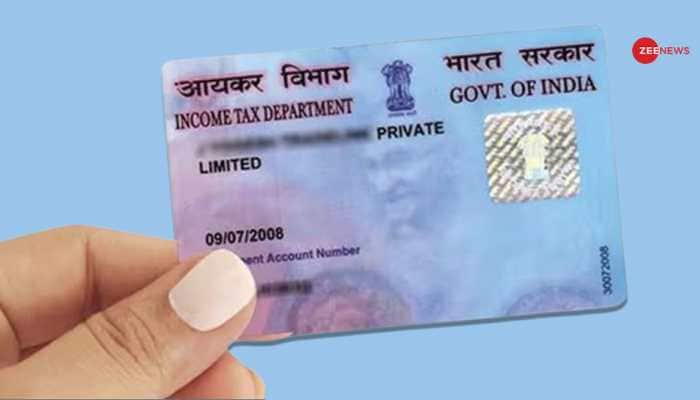Gold turns around falling fortunes after 3 years, outsmarts all other asset classes in 2016
Gold and silver have yielded returns of 26 percent and 45 percent, respectively, since the start of this calendar year before backing down.
Trending Photos
)
Mumbai: The year 2016 started with a big promise for gold as it turned around its falling fortunes for three straight years and came up as investors' top choice, but the rally all but fizzled out ahead of the new year.
It has been the best-performing investment tool this year so far in a challenging economic environment amid elusive global growth outlook, outsmarting all other asset classes.
The last three years in particular had been tough for bullion investors worldwide. But the remarkable recovery this year soon tapered off, belying all expectations.
The consolation is year-on-year return has turned positive, making it by far a successful one, beating even domestic equities.
Gold and silver have yielded returns of 26 percent and 45 percent, respectively, since the start of this calendar year before backing down.
The interest rate hike by the US Federal Reserve and prospects of a stronger dollar on a likely higher spending by President-elect Donald Trump put gold in a spot of bother. The government's demonetisation move -- akin to 'surgical strike' against black money -- led to a severe cash deficit. This, in turn, affected gold buying that saw demand collapse, reportedly down by about 40 percent.
The climb of standard gold (99.5 percent purity) this year was quick from a steady start at around Rs 25,000 per 10 grams as against the last year-end level of Rs 24,980. It hit a fresh multi-year high of Rs 31,570 in August before slipping back to Rs 27,585 as on December 27.
Similarly, pure gold (99.9 percent purity) took off, little changed, at Rs 25,150 against year-earlier close of Rs 25,130 and surged to scale a high of Rs 31,720 before retreating to Rs 27,735.
The silver (.999 fineness) prices have come off a high of Rs 48,730 per kg to trade at Rs 39,575 this year. At the start of 2016, it was modestly up at Rs 33,630 as against Rs 33,565 at the previous year-end.
In effect, both precious metals lost their mojo to end almost where they started off after equities bounced back from their worst-ever start.
Globally, the start of the year saw a big jump in gold, with prices rallying a staggering 29 percent from USD 1,060.20 to USD 1,372.60 an ounce in August, one of the strongest yearly openings for the metal in decades.
The precious metal is trading at around a 10-month low against the US dollar. It stabilised at around USD 1,151 as on December 27 after falling to a low of USD 1,123 in mid-November.
The prices of silver skyrocketed by a whopping 50 percent to hit a high of USD 20.70 an ounce before pulling back in early November to USD 15.70. It is trading at around USD 16.14.
High local prices due to weakness in the rupee, which crashed to a historic low of 68.86 against the dollar in mid-November, came as a big dampener.
The investor confidence in bullion got back, more so after the Brexit referendum shock and volatility due to Chinese market rout. Overall, global growth worries and geo-political risks amid collapsing oil prices have come as a "perfect blend" for gold, boosting its safe haven appeal.
Frenzied buying at low levels alongside a gradual pick-up in demand ahead of peak wedding and festival season gave gold vital support, taking it to multi-year highs. This surge was also driven by huge flows into exchange-traded funds (ETFs).
The yellow metal has been out of favour since the middle of the year and saw a painful sell-off towards the third quarter, with prices crashing to multi-month lows hit by a global commodity rout, a surging dollar and expectations that the US Fed will tighten policy more aggressively next year.
The last-minute agreement by OPEC members as well as that of non-OPEC players to slash production created more headwinds for the metal.
The surprise demonetisation move and heightened fears that the government is considering curbs on domestic holdings of gold and its imports to combat black money also took the sheen off the bullion. It came as a double-whammy for traders, which offset the gains of more disposable income following a good monsoon.
In a major policy move, Prime Minister Narendra Modi on November 8 announced withdrawal of Rs 500 and 1,000 notes from circulation - to crack down on terror financing and corruption.
Silver got off to a slow start, largely impacted by a jewellers' strike. Despite that, the outlook for industrial application of silver remained strong domestically due to robust demand from the solar power industry.
Much of the price appreciation has been driven by a global rebalance in demand and supply. This helped silver emerge as the best-performing industrial metal, with retail investment and jewellery fabrication both pulling off all-time highs.
A nation-wide strike by jeweller traders set off by a budget proposal of 1 per cent manufacturing excise tax queered the pitch. The 42-day protest against the move to bring jewellery sales under the tax net, however, ended in April.
Other than a considerable jump in buying associated with specific festivals such as Akshaya Tritiya, Dhanteras and Diwali along with wedding buys, the general enthusiasm among Indian consumers went missing. India's gold demand normally shoots up in the fourth quarter.
Jewellery buying took a knock as the cash shortage forced consumers to postpone buying who waited for further fall in prices. Gold imports fell, keeping the current account deficit in check.
India's gold imports declined 30.5 percent to USD 15.74 billion in April-November of the current fiscal, but exports of gems and jewellery grew by about 10 percent to USD 23.5 billion during the same period.
Gold demand in India, particularly from rural areas, shrank following the unexpected fallout of the high-value currency ban and disruption in supply chain for want of liquid cash even as the country's growth was projected lower.
But distress gold buying was seen across the Mumbai bullion hub as soon as the currency ban was announced as people, in a hurry to offload high-value notes, lapped up gold.
The government's move to make hallmarking of gold ornaments mandatory, which is aimed at protecting consumers, impacted trading sentiment.
It has withdrawn the 1 percent excise duty on branded gold coins of 99.5 percent purity while maintaining other import duties.
The introduction of a series of revamped gold monetisation schemes to check gold imports alongside high import duties added to volatility.
Domestic gold prices remained somewhat stable despite a steep crash in global trade. Though home currency went into a free fall to hit an all-time low, it recouped some losses towards the year-end on the back of suspected RBI intervention.
Overseas, the precious metal had to face economic uncertainties, negative interest rates and low inflation, too.
Stay informed on all the latest news, real-time breaking news updates, and follow all the important headlines in india news and world News on Zee News.
Live Tv







)
)
)
)
)
)
)
)
)
)
